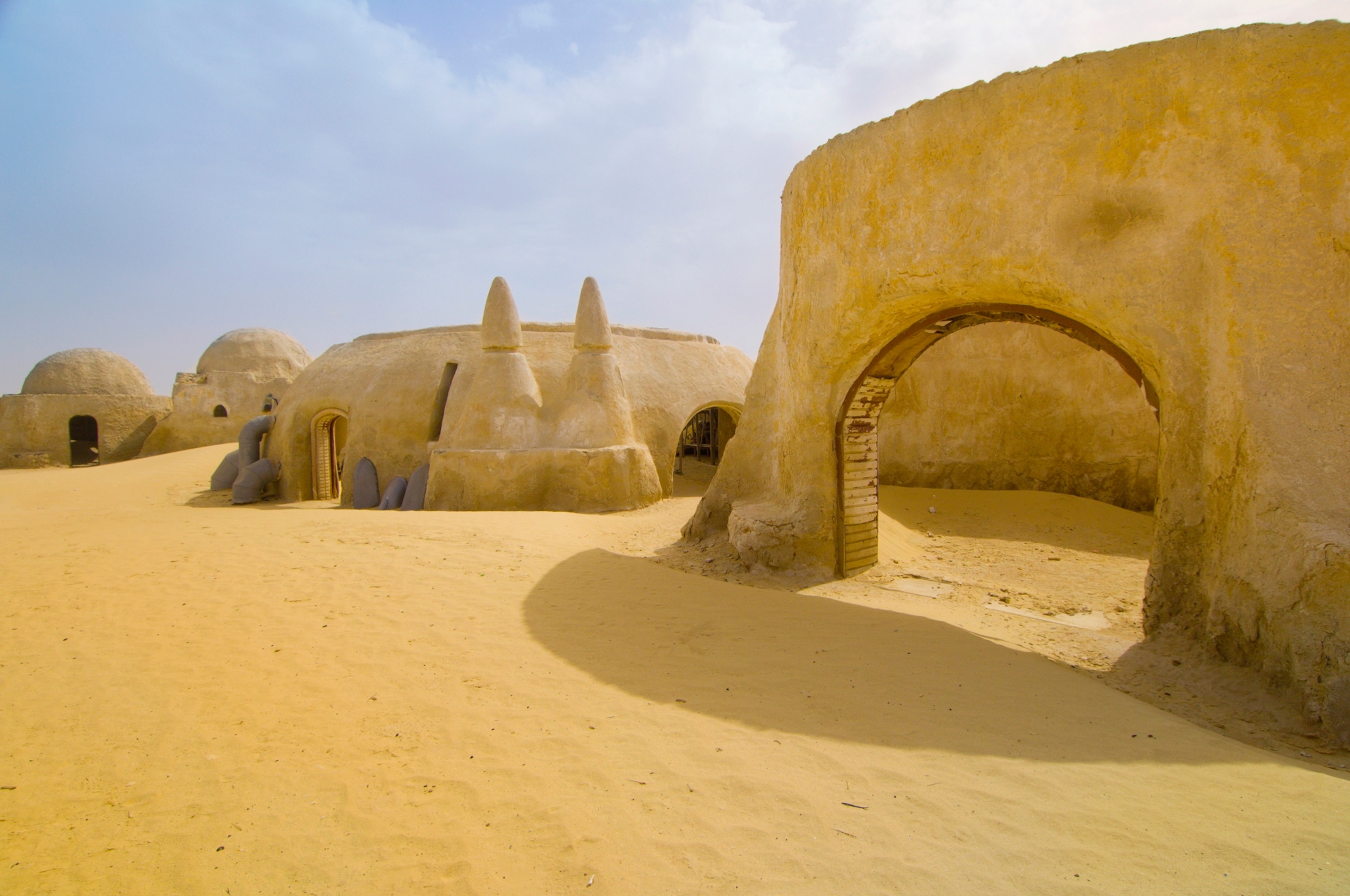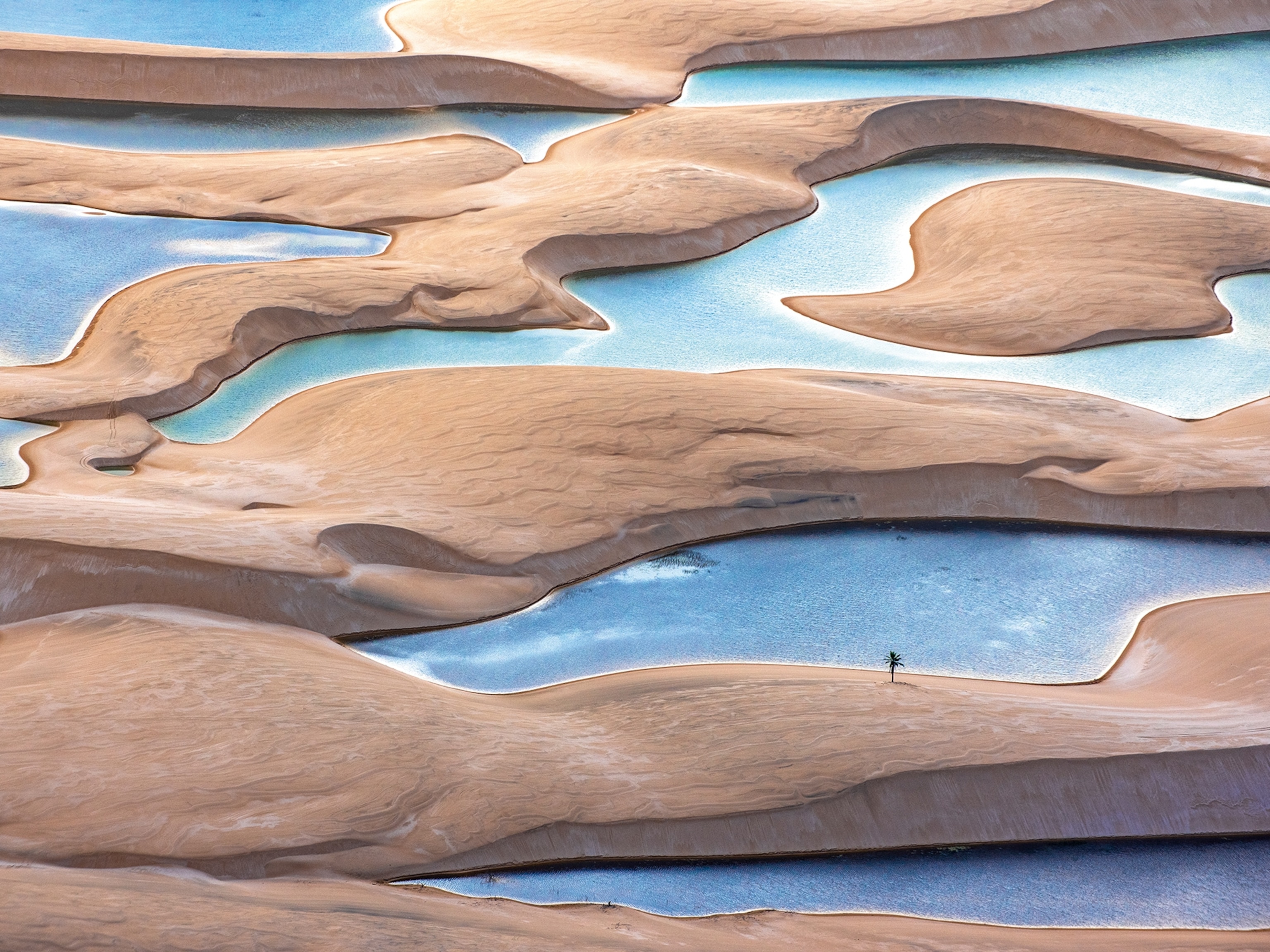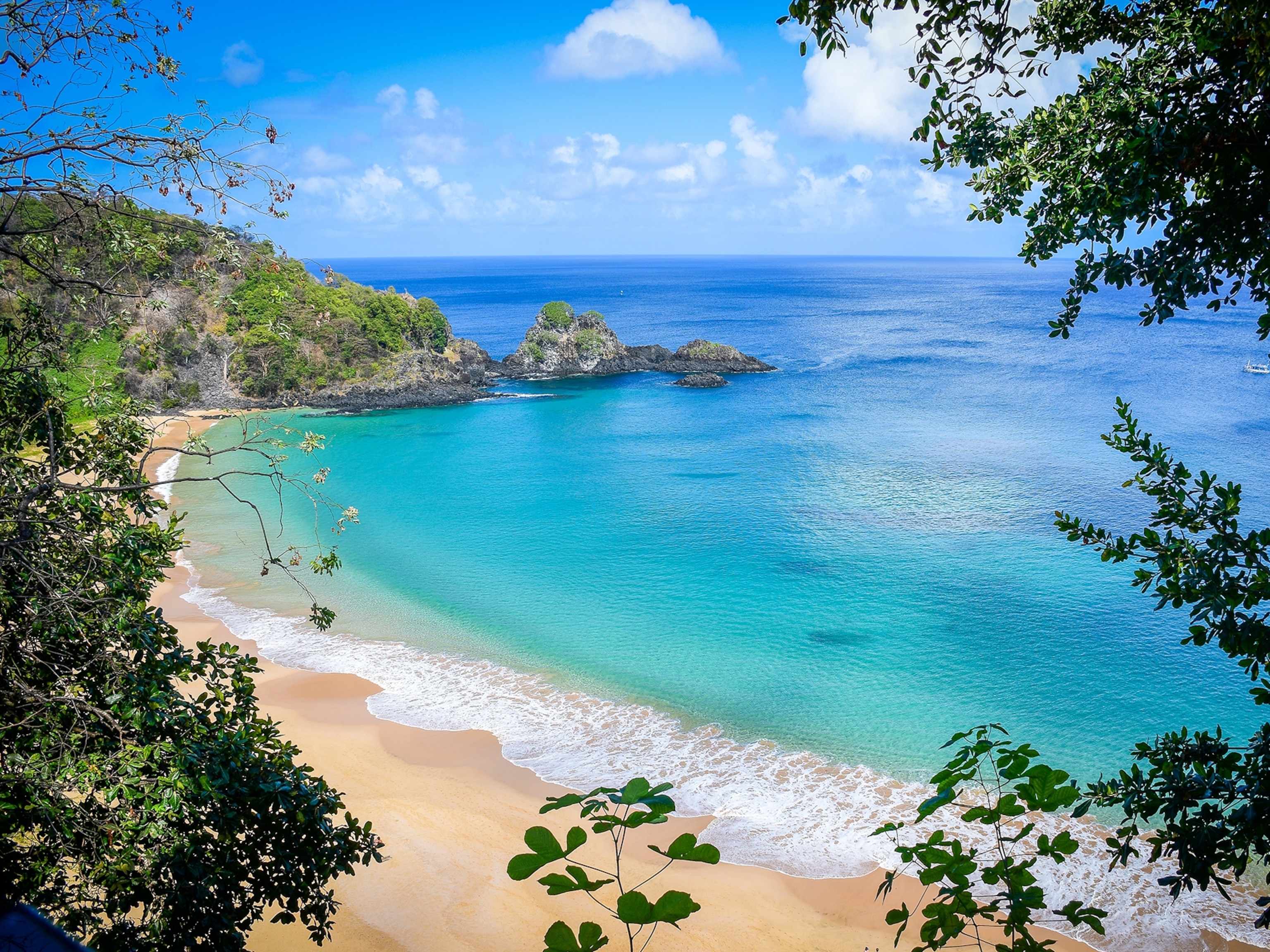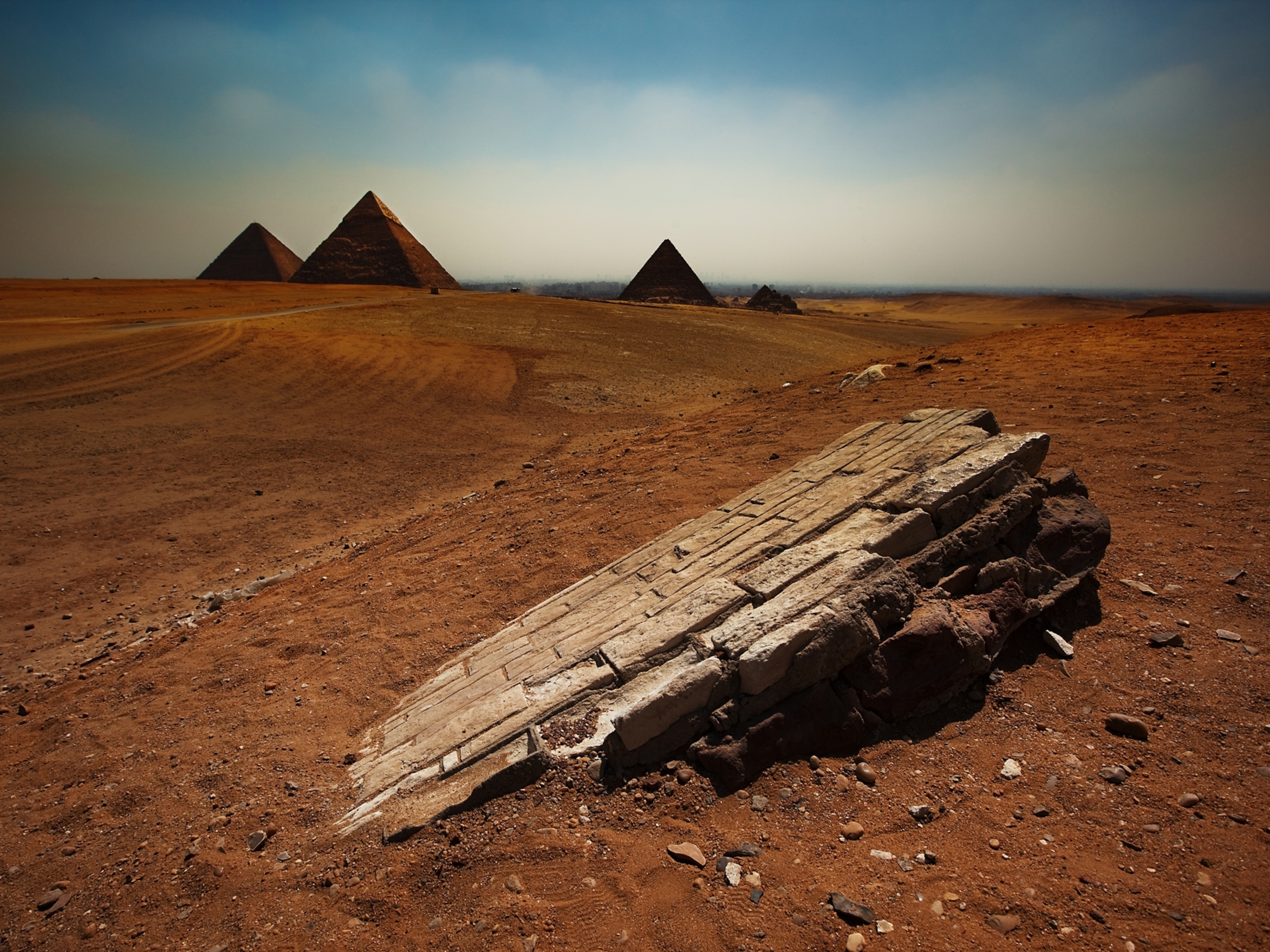
Dune May Doom "Star Wars" Set
Sand is burying buildings used in The Phantom Menace.
If Star Wars: The Phantom Menace had an epilogue, you might call it The Barchan Invasion. That's because a crescent-shaped sand dune called a barchan is slowly swallowing the spot in the Sahara that played Anakin Skywalker's hometown in the movie.
The set, erected outside the Tunisian city of Tozeur and used as a backdrop for the 1999 film—a "prequel" to George Lucas's wildly popular Star Wars trilogy—has become a pilgrimage site for truly devoted fans. Thousands trek into the desert each year to visit the fictional town of Mos Espa on the planet Tatooine, where a young Anakin lived with his mother and worked as a slave.
Ralph Lorenz has spent a lot of time staring at other planets, and he's even journeyed to Mos Espa—but not as a Star Wars fan (though he is one). Lorenz, a planetary scientist at the Johns Hopkins University Applied Physics Laboratory, studies sand dunes on both Mars and Earth. (Read about "singing" sand dunes.)
From Lorenz's perspective, the cluster of domed-roof plaster buildings in the Tunisian desert serves as a helpful "fiducial marker," or point of reference, in an otherwise barren landscape.
"One of the challenges in measuring dune migration on Mars or Earth," Lorenz wrote in a blog post, "is that dunes often appear in vast sand seas where not only can it be difficult to tell one dune from another, but there may be no fixed reference point against which to measure the dune's position."
Terrestrial dunes can form in several shapes, depending on the wind, weather, and type of sand. Barchans look like crescents, while others resemble stars, lines, or waves. (See aerial photographer George Steinmetz's story and pictures "Sailing the Dunes.")
The dune lurking at the east edge of the Star Wars set is a barchan—a "large, pudgy" one, according to a new paper co-authored by Lorenz and published in the journal Geomorphology.
By comparing a series of satellite images, the researchers calculated that the dune is moving at a rate of about 50 feet (15 meters) a year. Eventually, it will roll right over Mos Espa—probably crushing the movie set—and keep on moving.
"Left to itself, the dune will have crossed 'through' the set in the next six years or so," Lorenz said in an email. "But I understand from our Tunisian collaborator that the local authorities may bulldoze the dune to preserve the site as a tourist attraction."
Would that be worth it? Lorenz calls bulldozing the dune "an expensive and inelegant solution," and notes that it would only work temporarily, since there is an even larger barchan lurking behind the current invader. At the same time, he said, "it would be a shame if the set were damaged by the dune."





